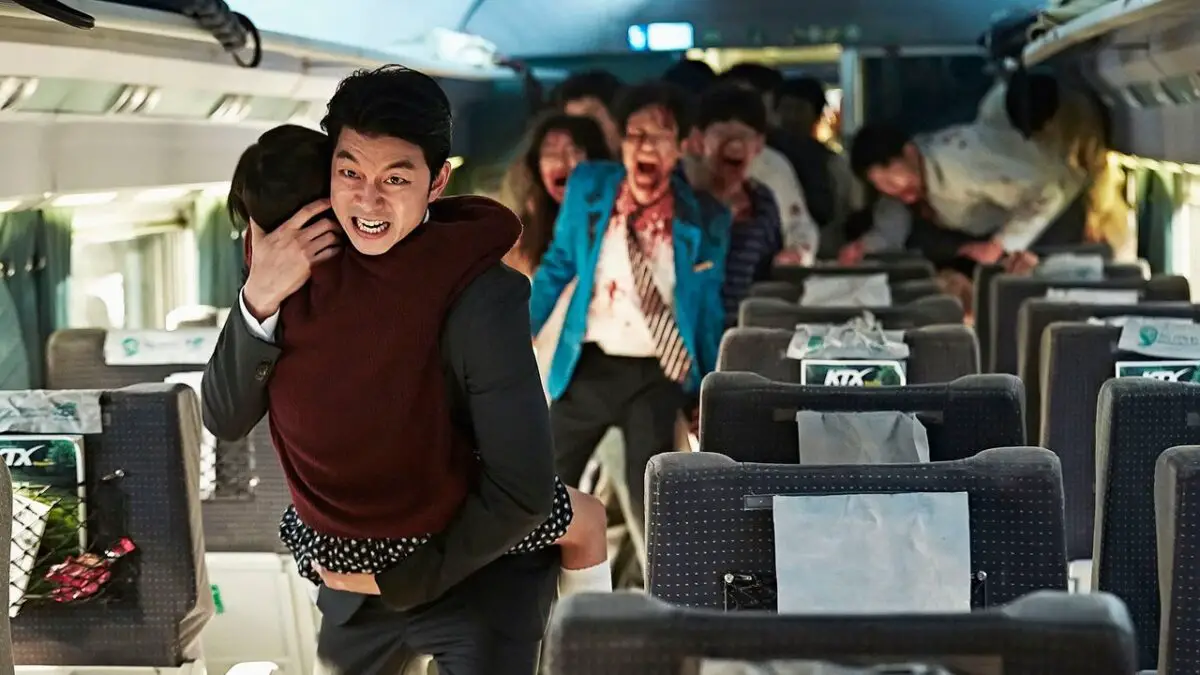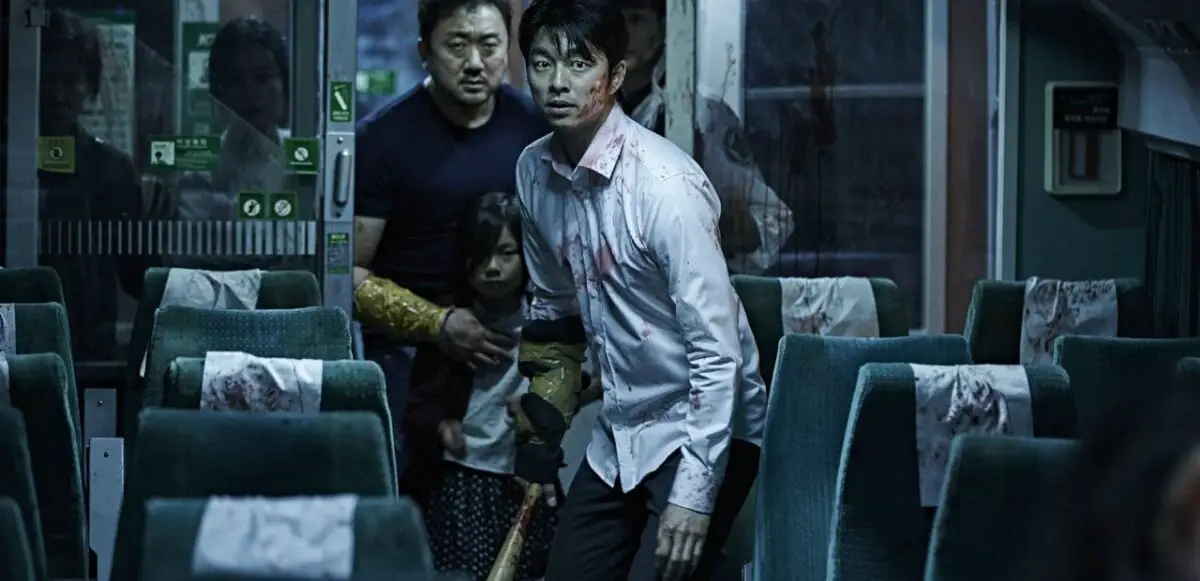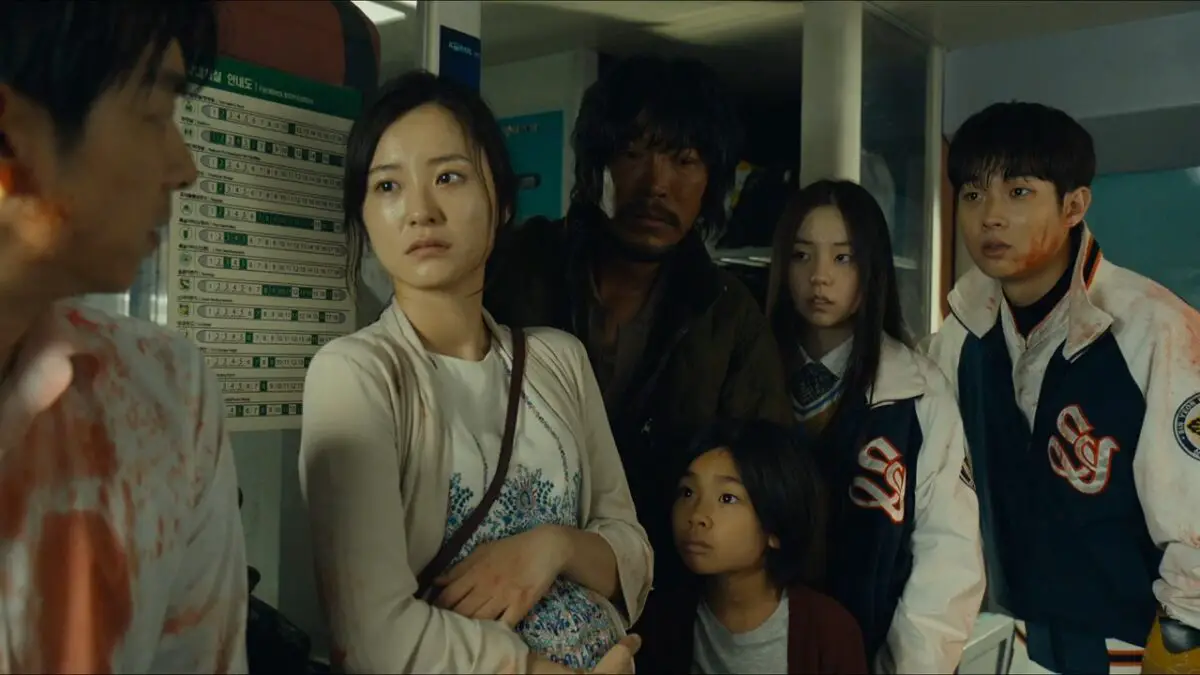 Apart from a couple of original films, “Train to Busan” is the first South Korean film on a zombie theme. Superiority in this genre did not prevent him from creating a real sensation, as well as a clear resemblance to “Outcast”, because throughout the entire action “Train to Busan” skillfully advertises KTX, which is what the main and only storyline rests on. Nevertheless, the film grossed a large, relative to Korea, box office (about 80 million). Has been nominated for a number of Asian awards and has been warmly received by critics and audiences alike. Korean Zombie Apocalypse
Apart from a couple of original films, “Train to Busan” is the first South Korean film on a zombie theme. Superiority in this genre did not prevent him from creating a real sensation, as well as a clear resemblance to “Outcast”, because throughout the entire action “Train to Busan” skillfully advertises KTX, which is what the main and only storyline rests on. Nevertheless, the film grossed a large, relative to Korea, box office (about 80 million). Has been nominated for a number of Asian awards and has been warmly received by critics and audiences alike. Korean Zombie Apocalypse
Below we, avoiding spoilers, will tell you why “Train to Busan” did not get lost in the stream of other, more famous films, and established itself as the best South Korean film on the theme of the zombie apocalypse.

Lack of familiar stamps
Despite the fact that the birth of the zombie apocalypse, and we are not talking about patient zero now, is almost impossible to show without stamps, “Train to Busan” neatly bypasses this topic, leaving only a couple of subtle hints. For example, the protagonist’s phone calls to his colleague, in which the latter admits that their company was involved in what happened.
Such a technique, although it explains almost nothing, looks quite innovative, if only because of its unimportance. Yes exactly. Most modern films about the invasion of zombies consider it a sacred duty to explain the nature of the origin of the virus. In most cases, it is completely clumsy, because often such explanations raise more questions than answers. In the case of “Train to Busan”, everything is simple. Whoever is involved in this is far away, and the main characters are here, on the train, and they need to save their lives.

Dominant human factor
The characters from Train to Busan are not Alice from Resident Evil. They, like ordinary people, have completely human feelings: confusion, fear and misunderstanding, which explain the hitch in actions in the face of a threat. For example, when an infected girl passes through the cabin, or at the time of infection of the first people on the train. But director Yeon Sang Ho is far from the first to show the real behavior of people when faced with a danger of unknown origin.

In the classic “Night of the Living Dead” (1968) by George Romero, in one of the first scenes, we see a brother and sister arriving at their father’s grave meet a man – dirty and shabby. Definitely – he is a zombie. But only for us. The characters on the other side of the screen do not know about the nature of his “illness” and try to find a logical explanation for what is happening. As a result, the first contact with a zombie ends with the death of one of the heroes.

Another example can be found in the cult “28 Days Later” (2002) by Danny Boyle. The hero of Cillian Murphy enters the church in search of people. In the main hall, he finds the infected, fearing them. But the hero does not know that they are infected, and instead of hiding or running away, he calls out to them. Certainly a mistake, but made under the strong influence of the human factor.

Following the traditions of the best zombie films, the characters of “Train to Busan” do not immediately realize that they are in a zombie apocalypse. That is why most of their decisions, actions or inactions look ridiculous, but plausible.

Zombies as a background for demonstrating complex human relationships
At first glance, Train to Busan is about the classic zombie apocalypse. And perhaps it would have been if the director had chosen any other location, except for the supermarket. It has already been staked out by the same George Romero using in the film “Dawn of the Dead” (1978) and Zach Snyder in the 2004 remake of the same name. But all the main action of the film takes place in a moving train, where in a confined space any contact with the infected is certain death. For this reason, the issue of human relationships comes to the fore.

By placing all passengers in close proximity to each other, the director raises complex and urgent social issues in each scene of the film. For example, are people ready to help each other in difficult and life-threatening situations; whether they are ready to sacrifice their comfort or interests, for the comfort or interests of others; are you ready to stick together and support in every possible way. And the most important: are you ready to sacrifice yourself for the salvation of others?

Train To Busan Ending Explained – Youtube Video Review & Analysis
Outcome
And if the majority of zombie horror games focusing mainly on the spectacle, they forget about such problems. That “Train to Busan” skillfully “combines” entertainment and problematics, delighting the audience with spectacular zombie scenes and forcing every now and then to worry about the life and relationships of the main characters.







